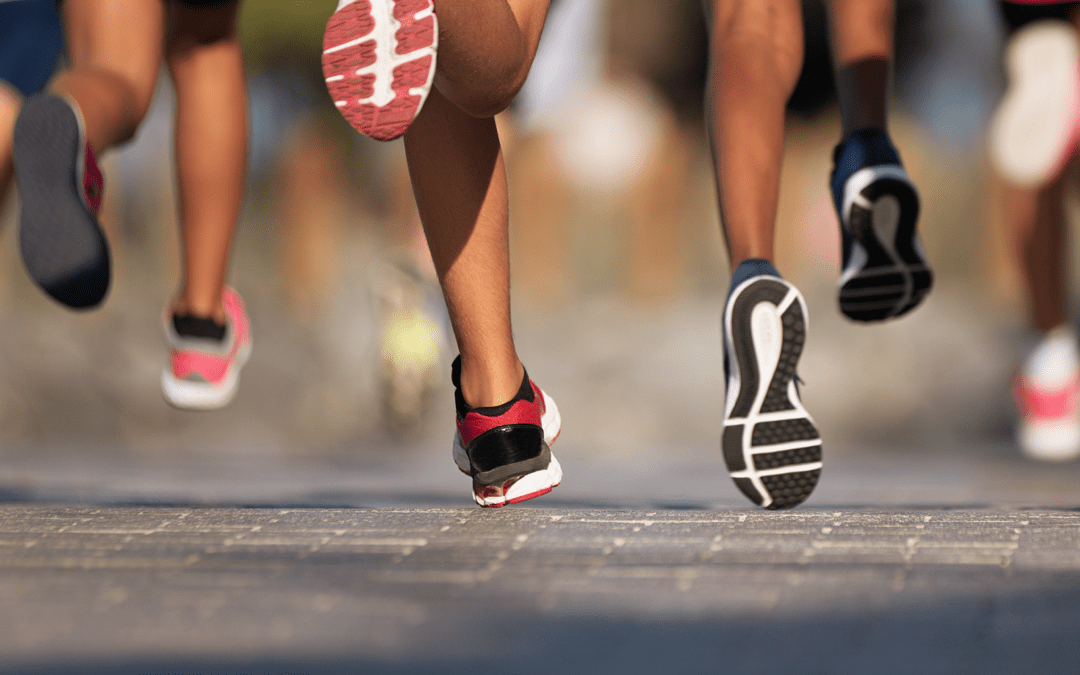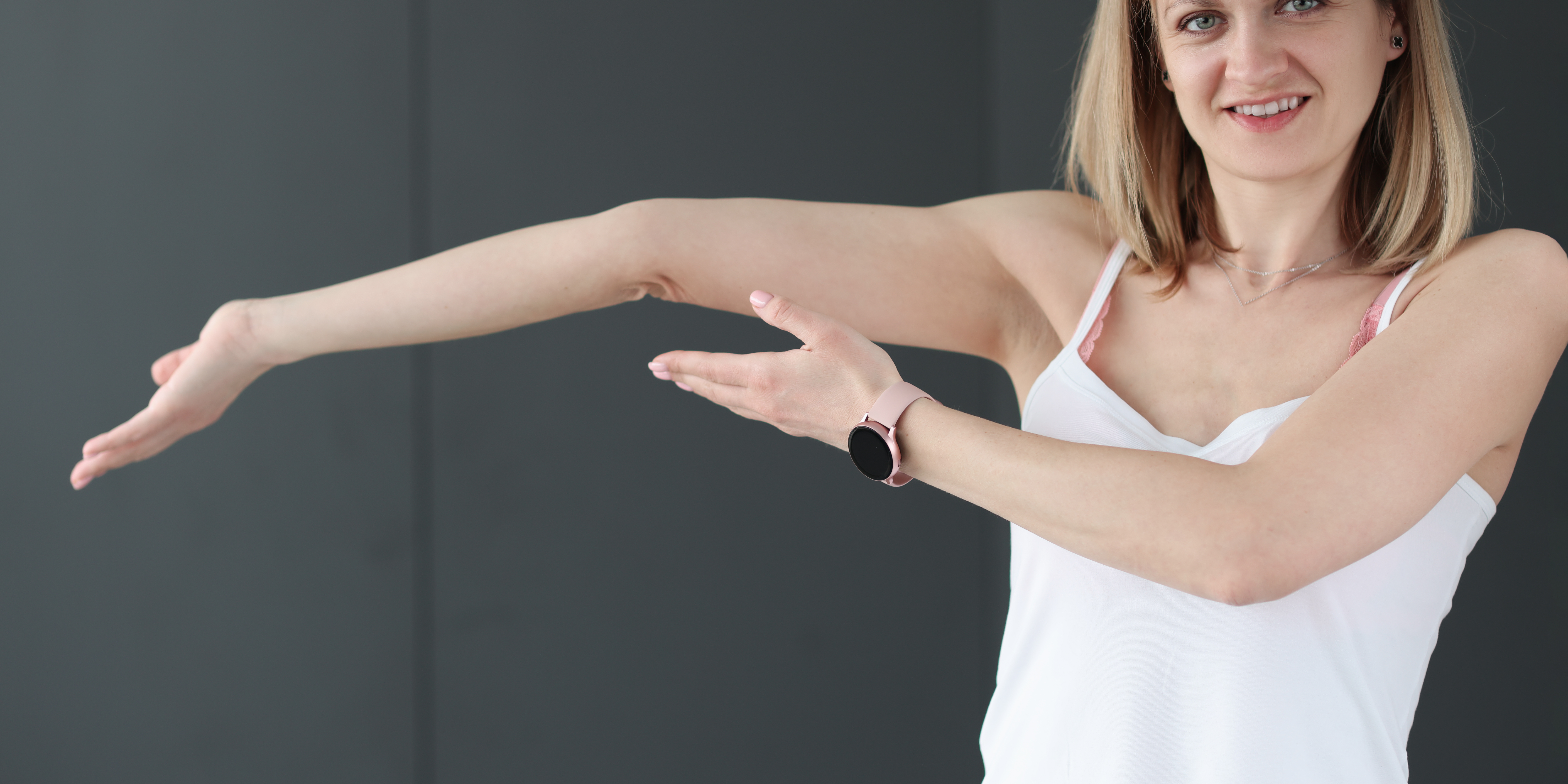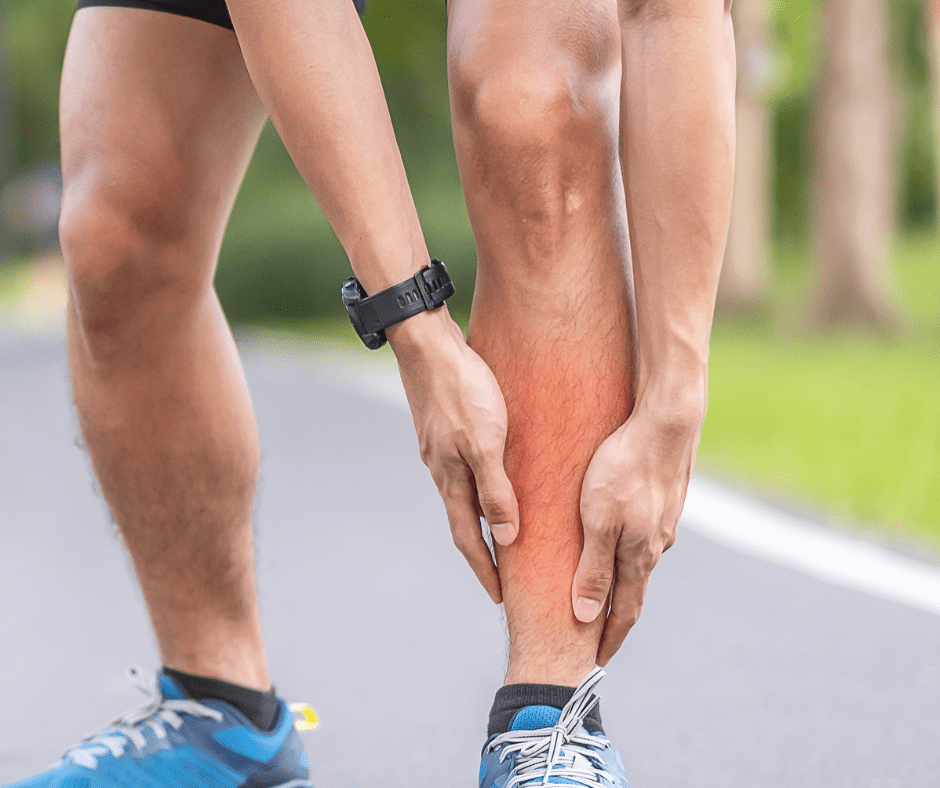ITB syndrome and plantar fasciitis in runners
Running, a sport celebrated for its simplicity, can sometimes unravel the intricate web of muscles and fascia in the human body, leading to injuries that challenge even the most seasoned athletes. In this article, we will delve into three common afflictions that haunt runners – iliotibial band (ITB) syndrome, plantar heel pain, and biomechanical overload syndrome – exploring their origins, mechanisms, and contemporary approaches to management.
Iliotibial Band Syndrome (ITBS) in runners
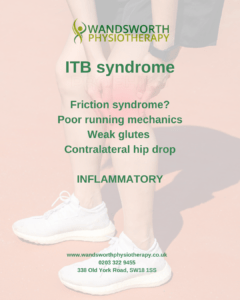
Long perceived as a mere friction-related ailment, ITB syndrome is now understood to be more complex than initially thought. Recent research suggests that it may be an irritation of the fatty tissue between the ITB and the thigh bone, triggered by poor running mechanics. Weak glutes and contralateral hip drop during the running cycle are key culprits in this scenario.
The iliotibial band is a thick band of fascia that runs along the outside of the thigh, connecting the TFL and glutes to the knee. The ITB can very easily be seen on ultrasound. During running, the ITB rubs against the lateral femoral epicondyle, and if there’s a biomechanical imbalance, irritation and inflammation may occur. Fluid tracking under the ITB seen on ultrasound helps to make a correct diagnosis.
One critical factor is the engagement of the gluteal muscles, which play a pivotal role in stabilizing the pelvis during running. Weakness in these muscles can lead to increased stress on the ITB. Moreover, contralateral hip drop – a lateral tilt of the pelvis on the opposite side of the stance leg – can further exacerbate the issue.
Management of ITB syndrome involves a multifaceted approach. It is primarily inflammatory in nature so a period of ice and anti-inflammatories may be required, and we can help prescribe anything that may be needed. Strengthening exercises targeted at the gluteal muscles, coupled with corrective exercises and gait retraining to address hip drop using cues to widen running stance or increase running cadence, are crucial components. Additionally, proper warm-up routines, gradual increases in training intensity, and strategic rest intervals are vital for preventing and managing ITBS.
Plantar Heel Pain in runners
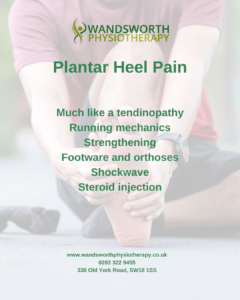
Plantar heel pain, a prevalent woe among runners, shares common ground with tendinopathy. It involves collagen degeneration, primarily affecting the plantar fascia – the thick band of tissue that connects the heel to the toes. The plantar fascia is very easily seen on ultrasound, and we also typically see a thickened fascia with loss of fibrillar pattern in a pathological foot. We can also distinguish heel spurs and plantar fibromas.
Like tendinopathy, managing plantar heel pain necessitates a comprehensive strategy. Load management is a cornerstone, emphasising gradual increases in activity to allow the tissues to adapt without succumbing to excessive stress. Strengthening exercises, particularly for the intrinsic foot muscles and calf, can enhance stability and support. Running gait re-education, using a gel heel cup and the correct trainers will also be useful.
Shockwave therapy has emerged as a promising intervention for plantar heel pain. By delivering shockwave to the affected area, this non-invasive treatment stimulates blood flow and accelerates the healing process. Integrating shockwave therapy into the rehabilitation plan for plantar heel pain showcases promising results, offering runners a faster return to their beloved activity. Lastly, and for those with resistant heel pain an ultrasound guided steroid injection may well be required.
Biomechanical Overload Syndrome in runners
Muscle overload syndrome, a consequence of loading habits exceeding a muscle’s capacity to tolerate that load, is a condition that demands attention in the running community. While running is undoubtedly an excellent form of exercise, overzealous training, rapid increases in mileage, and inadequate recovery can lead to biomechanical overload.
In biomechanical overload syndrome, the delicate balance between training intensity and muscle recovery is disrupted. This imbalance places excessive strain on the muscles, leading to microtrauma and potential long-term damage. This can typically affect the calf muscles as well as the tibialis anterior (think shin splints), the hamstrings, quads and glutes.
Prevention and management involve a twofold strategy. Firstly, a nuanced understanding of one’s training load is imperative. Gradual progression, proper recovery periods, and strategic cross-training can mitigate the risk of biomechanical overload. Secondly, comprehensive strength training focusing on muscle groups involved in running can fortify the body against excessive stress.

